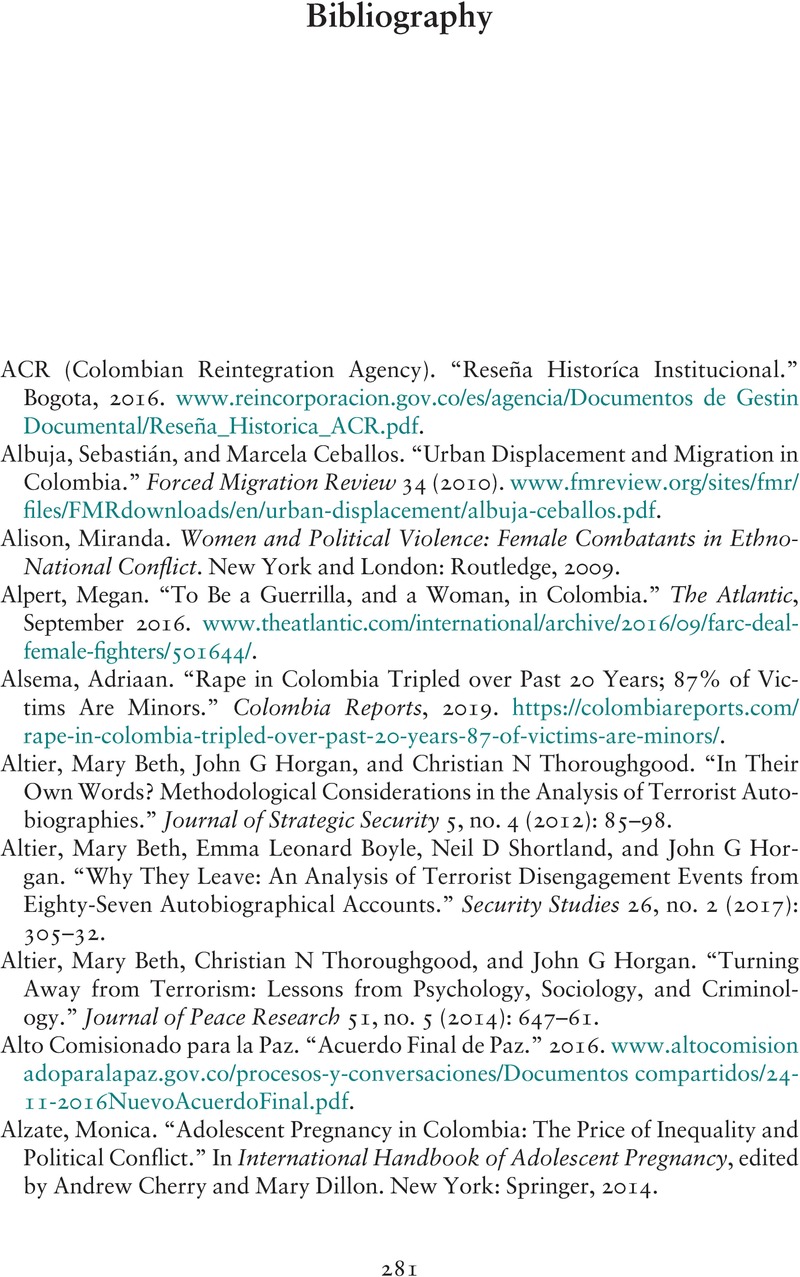Book contents
- Framing a Revolution
- Framing a Revolution
- Copyright page
- Dedication
- Epigraph
- Contents
- Figures
- Tables
- Preface
- Acknowledgments
- Abbreviations
- I What’s in a Frame?
- II A History of (Gendered) Violence in Colombia
- III Navigating Disarmament, Demobilization, and Reintegration in Colombia
- IV Framing Victimhood
- V Contesting the Victimhood Frame
- VI Framing a Revolution
- VII Countering the Revolution Frame
- VIII Deserters versus Loyalists
- IX Contesting the Deserter Frame
- X Framing Reintegration
- Book part
- Bibliography
- Index
- References
Bibliography
Published online by Cambridge University Press: 02 March 2023
- Framing a Revolution
- Framing a Revolution
- Copyright page
- Dedication
- Epigraph
- Contents
- Figures
- Tables
- Preface
- Acknowledgments
- Abbreviations
- I What’s in a Frame?
- II A History of (Gendered) Violence in Colombia
- III Navigating Disarmament, Demobilization, and Reintegration in Colombia
- IV Framing Victimhood
- V Contesting the Victimhood Frame
- VI Framing a Revolution
- VII Countering the Revolution Frame
- VIII Deserters versus Loyalists
- IX Contesting the Deserter Frame
- X Framing Reintegration
- Book part
- Bibliography
- Index
- References
Summary

- Type
- Chapter
- Information
- Framing a RevolutionNarrative Battles in Colombia's Civil War, pp. 281 - 296Publisher: Cambridge University PressPrint publication year: 2023



